Nine Underrated Books Written by Famous Authors

There’s a reason why many authors become famous, and that’s because their work is enthralling. But sometimes, certain books fall through the cracks when these literary giants are referenced. This list will reintroduce you to some of the most prominent Western writers of all time through their less-celebrated works. And who knows, maybe once you’re better acquainted with their other work, you can return to their classics with a newfound appreciation.

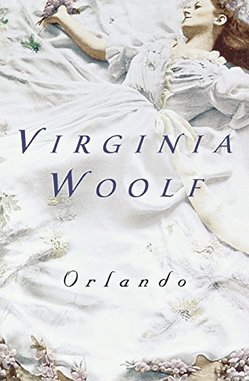 Orlando: A Biography by Virginia Woolf (1928)
Orlando: A Biography by Virginia Woolf (1928)
You know her from: Mrs. Dalloway (1925), To the Lighthouse (1927), A Room of One’s Own (1929)
To the Lighthouse and Mrs. Dalloway are required reading on countless English class syllabi across the nation. And rightfully so—these are two of the best modernist novels of all time. Woolf takes the overlooked stories of the silenced middle-aged women and finally gives them space on the page, addressing the events that take place in women’s lives after “the celebrated wedding scene,” the trope that concluded most women’s fiction for centuries. But how come the last novel in Woolf’s top three most celebrated works, Orlando: A Biography, is so often left off the high school curriculum? Through a type of lyricism that borders on experimentalism, Woolf’s Orlando traces the life of her titular character, inspired by her real-life lover Vita Sackville-West. Orlando transitions from man to woman and lives for centuries, meeting key figures in English literary history along the way. If you’re looking for a feminist classic (and remember enjoying A Room of One’s Own in the 9th grade), give Orlando a read.

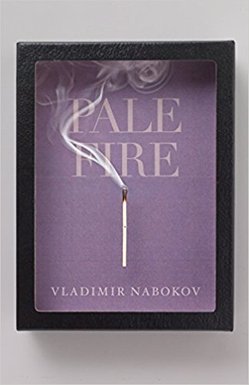 Pale Fire by Vladimir Nabokov (1962)
Pale Fire by Vladimir Nabokov (1962)
You know him from: Lolita (1955)
Lolita: You either love it, or you hate it. Either way, you’ve definitely heard of it. Lolita is one of those books that, even if you’ve never read it before, you know the basic premise. Some creepy old dude (fictional, thank goodness) is sexually attracted to his 12-year-old stepdaughter Dolores, who he privately nicknames “Lolita.” Doesn’t sound appealing to you? Well, don’t write off Nabokov just yet. A little under a decade later, the Russian novelist came out with a book with a more palatable subject in mind (but with the same genius and creativity exhibited in his breakout project). The novel is broken into two parts: A 999-line poem titled “Pale Fire,” written by the late fictional poet John Shade, and criticism (a foreword, lengthy commentary and index) penned by his neighbor and academic colleague, Charles Kinbote. However, Kinbote quickly digresses from the original task, delving into his own list of concerns. This unusual structure has given Pale Fire its reputation as one of the most effective examples of metafiction.

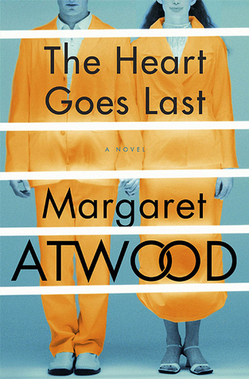 The Heart Goes Last by Margaret Atwood (2015)
The Heart Goes Last by Margaret Atwood (2015)
You know her from: The Handmaid’s Tale (1985)
With the 2017 release of Hulu’s The Handmaid’s Tale, Canadian author Margaret Atwood has turned into a household name, even amongst non-readers. So if you’re a fan of the dystopian drama and still want more, there’s good news: Atwood has written just short of two dozen books, many of which are in the realm of science fiction. One of her most recent, just published in 2015, is The Heart Goes Last. Charmaine and Stan are down on their luck and living in their car, when they see an advertisement for Consilience, a “social experiment” that offers stable jobs and housing. But there’s a catch: every other month, the couple must swap with their “Alternates” (a couple who must do the reverse) for a prison cell—meaning they will be locked up, but they will also have guaranteed meals and a constant roof over their heads. Charmaine and Stan decide the pros outweigh the cons and sign up immediately, but the program is not as straightforward as they expected.

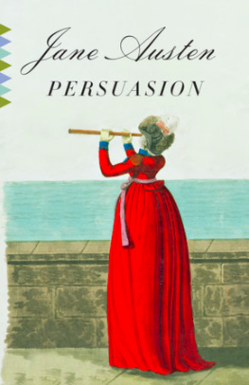 Persuasion by Jane Austen (1817)
Persuasion by Jane Austen (1817)
You know her from: Sense and Sensibility (1811), Pride and Prejudice (1813), Mansfield Park (1814), Emma (1816)
With the publications of Sense and Sensibility, Pride and Prejudice , Mansfield Park and Emma, Jane Austen achieved success as a published writer. The four have all since been turned into classic films that have been made and remade, time and time again. But one of Austen’s best works is also one of her most overlooked: Persuasion, which was published six months after her death in conjunction with Northanger Abbey. The novel tells the story of the middle child of three daughters, Anne Elliot, who runs into her ex-fiancé almost a decade after she was persuaded to break off the engagement. By the time she wrote Persuasion, Austen had developed not only signature themes in her work, but also respected patterns in her mode of narration. Austen is credited as being one of the first novelists to use free indirect discourse, a device that intertwines both first and third person narration. Arguably the most mature of her books, Persuasion signifies one of Austen’s greatest contributions to literature: An approach to novel-writing that allowed a character’s voice and disposition to seep through the words of a third person narrator.

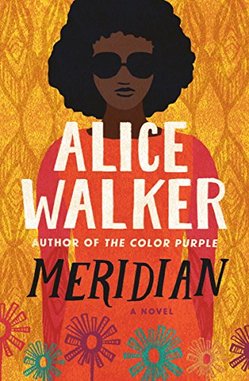 Meridian by Alice Walker (1976)
Meridian by Alice Walker (1976)
You know her from: The Color Purple (1982)
Just because the books on this list are underrated does not mean that an author’s most famous works are overrated. That’s especially true in Alice Walker’s case. The novelist’s most well-known work, The Color Purple, could never be overrated. Purple is a tale of hope in times of despair, love in a system of abuse, support amongst women in a patriarchy; in other words, the book tells a gripping story of the African American experience in the South. That being said, Walker has published several other books that have never gotten the recognition they deserved. Any of these novels could have made this list—Possessing the Secret of Joy (1992), The Temple of My Familiar (1989) or Now Is the Time to Open Your Heart (2004). However, one of Walker’s best received books is from 1976, a novel aptly titled Meridian. Meridian Hill is a black activist in the late 1960s, who enters the Civil Rights Movement at a time when the conflict is reaching its peak violence. For over a decade, Meridian grapples with the many definitions of social activism, namely, if she is willing to kill for the revolution.

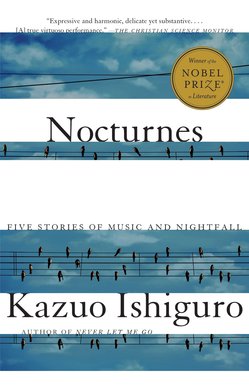 Nocturnes: Five Stories of Music and Nightfall by Kazuo Ishiguro (2009)
Nocturnes: Five Stories of Music and Nightfall by Kazuo Ishiguro (2009)
You know him from: Never Let Me Go (2005)
Since winning the Man Booker Prize almost three decades ago, Kazuo Ishiguro has been the gift that keeps on giving. Ishiguro’s 2005 novel, Never Let Me Go, was named the best novel of the year by Time and was included in the magazine’s list of the 100 best English-language novels published in the last century. But although he is best known for his seven fictional novels, Ishiguro is also a master of the short story. Each of the five stories in Nocturnes focuses on music and musicians at the end of the day. The main characters include an American singer in Venice, an English teacher in London, a young guitarist in Worcestershire, a saxophonist in America, and a Hungarian cellist. The vignettes build off of each other to create scenes of repose, melancholy, reflection and beauty.

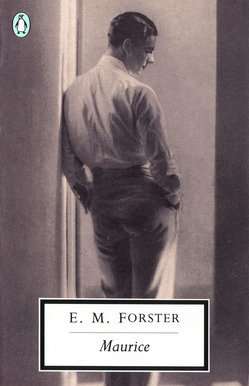 Maurice by E. M. Forster (1971)
Maurice by E. M. Forster (1971)
You know him from: A Room with a View (1908), A Passage to India (1924)
English novelist E. M. Forster is best known for his novels that examine class differences and hypocrisy, including A Room with a View and A Passage to India. But there was another theme that captured Forster’s attention, one that had to be repressed throughout his lifetime. Forster was gay, and although very conscious of his repressed desires, he was 27 when he finally touched a man. Forster’s life experience prompted the foremost concern of his novel Maurice, which was only published posthumously. In his terminal note to Maurice, Forster describes his desire to write a happily-ever-after ending to a gay love story: “A happy ending was imperative. I shouldn’t have bothered to write otherwise,” Forster explains. “I was determined that in fiction anyway two men should fall in love and remain in it for the ever and ever that fiction allows.”

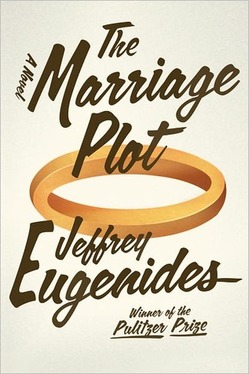 The Marriage Plot by Jeffrey Eugenides (2011)
The Marriage Plot by Jeffrey Eugenides (2011)
You know him from: The Virgin Suicides (1993), Middlesex (2002)
The Virgin Suicides served as the basis of a Sofia Coppola 1999 feature film of the same name, while Middlesex received the 2003 Pulitzer Prize for Fiction. But Eugenides has also published some fantastic work in the last decade, including his most recent novel, The Marriage Plot. Throughout the novel, English major Madeleine Hanna muses on her undergraduate thesis, which revolves around the concept of “the marriage plot” in 19th century literature. In this way, The Marriage Plot is not only a realist story about college love triangles and marriage, but it’s also a metaliterary mulling over, a postmodern novel that comments on the very kind of story that Eugenides is in the process of telling.

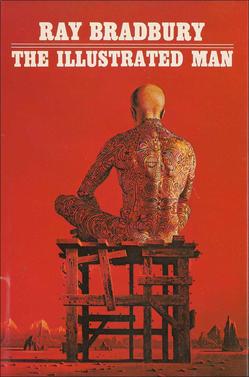 The Illustrated Man by Ray Bradbury (1951)
The Illustrated Man by Ray Bradbury (1951)
You know him from: Fahrenheit 451 (1953)
Fahrenheit 451 was probably on your summer reading list, or the first book report you were ever assigned. It’s an English class staple: A book about the importance of books! What a wonderful way for educators to leave subliminal messages for their students! But in all seriousness, Bradbury was a maverick in his field, deemed in his New York Times obituary “the writer most responsible for bringing modern science fiction into the literary mainstream.” And that’s not just via Fahrenheit 451; one of Bradbury’s best works of speculative fiction is his sci-fi collection The Illustrated Man. The book includes 18 short stories, characterized by their interest in psychology and the dangers of technology. And it was way, way, way ahead of its time.







































